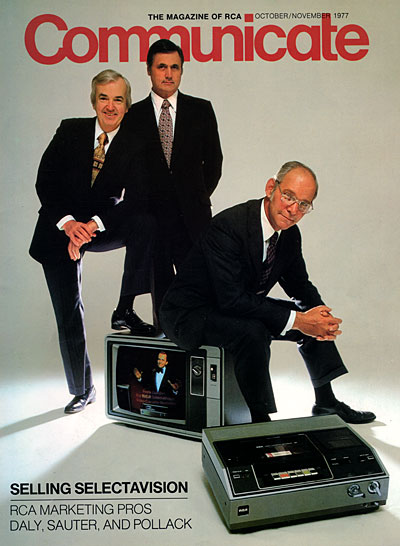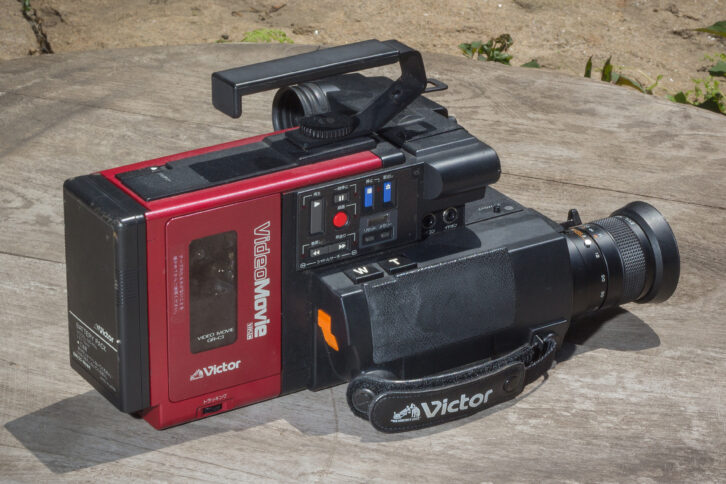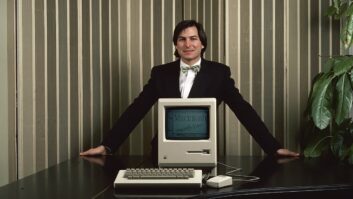
This year marks the 100th anniversary of the founding of the CTA (Consumer Technology Association), which started out as the RMA (Radio Manufacturers Association). This is the fifth in a series of essays exploring and celebrating CTA’s and our industry’s first century of invention, innovation, and entrepreneurship, assembled from varying technology historical research and writings I have done over the course of 20-plus years, including from an annually updated industry history for CTA’s now-defunct Digital America, 20-plus years of CTA Hall of Fame inductee biographies, and numerous tech history articles for a variety of publications over the years.
Here are the previous chapters:
- Part 1: Founding
- Herbert H. Frost: CTA’s “George Washington”
- Part 2: David Sarnoff
- Part 3: The TV Age
- Part 4: The Sixties
- Jack Wayman, Our Industry’s Indispensable Exec
Thomas Edison was wrong.
I know, not exactly a shocking appraisal considering the Wizard of Menlo Park, the man who perfected the incandescent light bulb (>cough< Joseph Swan, >cough<), co-invented motion pictures (>cough< W.K.L. Dickson >cough<), and invented the phonograph also tried to sell us homes composed completely of poured concrete (no kidding), not to mention being on the wrong end of the whole AC-DC “War of the Currents” debacle.
In this instance, however, it’s Edison’s inventing philosophy, oft emulated in our industry afterward, that has proven to be hysterically flawed.
It was October 1868, before he became world famous. Edison used his expertise in telegraphy to invent an electronic vote counter designed to speed up vote counting in legislative bodies, one of his first patents. He then tried to sell his innovation to the Massachusetts Legislature, which immediately rejected it since members liked to use the slow paper ballot process to lobby fellow legislators.
In the aftermath of this failure, Edison swore that he would “never waste time inventing things that people would not want to buy.”
Of course, today all legislatures use electronic or digital vote counting, so I guess one could argue that Edison was simply ahead of his time, as he often was. More importantly, Edison’s overall invention philosophy was demolished by almost every device and technology introduced during the 10-plus years between 1975 and 1985, and especially by nearly every noteworthy tech entrepreneur during this period and beyond.
The 1970s
Culturally, this period was rich, different, new, exciting, and socially impactful filled with creations, events, and personalities exhibiting that rare combination of success, popularity, and social relevancy exemplified by Muhammad Ali, Norman Lear, and Billie Jean King.
In the larger world, however, the 1970s were ugly and soul-crushingly depressing. Vietnam, Watergate, and Nixon, “rust belt” deterioration, high unemployment, high inflation, then recession then high inflation again, rising gas prices, the Arab oil embargo and gas lines, “Ford to City: Drop Dead,” Son of Sam, blackout, the Bronx is Burning, Love Canal, the Iran Hostage crisis, the Soviet invasion of Afghanistan, Disco Demolition Night, the Olympic boycott, ABSCAM, the Iran hostage rescue disaster, the murder of John Lennon.
Those who could get into Studio 54 or other disco clubs could numb the ugly world via loud music, dance, drink, or drugs – or some combination thereof, sometimes fatally.
Me? I thankfully enjoyed five gloriously insulated college years before being rudely chucked into the adult working world just as the late 70s …stuff… was hitting the proverbial fan.
Creating a Need
The real world of the late 1970s might have been disheartening, but the consumer electronics business was exploding – in a good way.
Because this 10-year-period was so packed with innovation, I’ve decided to break Part 5 into four pieces, with individual parts dedicated to the home video revolution, the personal and digital audio revolution, the personal computer revolution, and the denouement of many of these revolutions in the literally Orwellian year of 1984.
Just as a refresher, the consumer electronics industry on its 50th anniversary in April 1974 consisted of largely just four major products in relatively stagnant categories: TV, radio, record players, and audio tape. Over the subsequent 10 years, however, the number of disruptive technologies and devices would explode, including video recording (VCRs and camcorders), video games, the personal/home computer, personal audio, the CD, cordless home telephones, the cellphone, GPS, CB radio, and the internet, to just name a few. Many of these devices birthed entirely new businesses, a few literally not suitable for the whole family.
Defying Edison’s declaration, not only did we not think we needed or, more importantly, wanted most of these disruptive devices, but many experts (often embarrassingly including myself) proclaimed we would never need or want them. Who needs a computer at home? Why would I buy a multi-thousand-dollar cellphone when there are pay phones everywhere? What is and what do I do with an “internet”?
To sell these new but often mystifying wonders to an unsuspecting public, the industry developed marketing mechanisms for creating a use, and, more importantly, a desire for products we had no idea we couldn’t live without.
Another aspect of this disruptive decade was the slight alteration of where new technologies and devices originated. Two of the singular technologies from this period were developed not by individual inventors or in corporate R&D labs but from and for the military – the Internet, initially conceived to provide a decentralized government communication network in case of nuclear war, and GPS, spearheaded by the Air Force.
A few new consumer technology businesses were also enabled by another unlikely source: the courts. Competing corporate interests sued to stop several new products and, thankfully for them, failed. Court decisions helped pave the wave for the entire home video and digital music businesses, for instance, all of which ironically ended up enriching the lawsuits’ losers.
Of course, increasingly impersonal corporate R&D labs produced many innovations of the time, but there were still individual visionaries who paved the way.
Take the case of Steve Sasson, for instance.
Picture This
In Part 4: The Sixties, I described the accidental invention of the digital imaging chip, the CCD, by Willard Boyle and George Smith, physicists in the Semiconductor Components Division at Bell Labs, in late 1969. Subsequently, several companies including Texas Instruments, RCA, and Fairchild began developing color image sensors. In 1975, Kodak researcher Kenneth A. Parulski led the successful development of a color CCD.

At around the same time, another young Kodak engineer, Steve Sasson, was given a broad assignment to build a digital camera using the new CCD. Sasson went about constructing the digital circuitry from scratch, using oscilloscope measurements as a guide. For the rest of the camera, he made use of what was available to him at the time: an analog-to-digital converter from Motorola, a movie camera photographic lens made by Kodak, and tiny CCD chips introduced in 1973 by Fairchild. The original prototype was eight pounds and looked like a toaster made with an Erector Set.
With a resolution of 0.01 megapixels, Sasson’s cobbled contraption recorded black and white digital images to a magnetic cassette tape. With this prototype model, Sasson took the first digital image in December 1975; it took 23 seconds to capture the image, but it forever changed the way the world took photos.
Kodak, however, feared product/industry cannibalization of its film business, similar to RCA chief David Sarnoff’s fears of his perceived threat to AM radio from Edwin Armstrong’s FM (see Part 2: David Sarnoff). So instead of pouncing on its singular digital camera innovation, Kodak punted on capitalizing on its own invention, and – well, we all know what happened to Kodak.
Lesson learned? By some, yes. By others? Not so much.
Without Kodak taking a proactively lead, it would take 20 years for Sasson’s digital camera to finally get into consumers’ hands. Oddly, the digital camera was beaten to the market by a seemingly more complicated image-capture device.
Watch ‘Columbo,’ Record ‘Kojak’
As I related in Chapter 3 and, more expansively, here, the commercialization of audio tape led directly to the development of videotape recording in the mid-1950s.
In the early 1960s, as reel-to-reel audio tape machines became a consumer high-end hi-fi staple, Sony and a few other companies tried to sell consumer tabletop and portable reel-to-reel video tape recorders, all of which failed to catch on for a variety of not-ready-for-prime time technical and usage case reasons – for one thing, film-based home movie cameras were lighter and easier to use (>cough< Abraham Zapruder >cough<).
Plus, the industry wondered if it was even legal to record copyrighted TV programs.
If video recording was to be bought by consumers for home usage, it first had to be made simple and convenient.
 Sony engineer Koichi Tsunoda initially proposed the idea of a video cassette in 1964 after seeing Philips’ compact audio cassette. Two companies soon were racing to perfect non-compatible videocassette formats: Sony, with its Beta system, and JVC, with its Video Home System (VHS), developed by chief engineers Yuma Shiraishi and Shizuo Takano. But Konosuke Matsushita, founder of Matsushita, failed in his attempts to get his company’s JVC subsidiary and competitor Sony to agree on a single VCR format.
Sony engineer Koichi Tsunoda initially proposed the idea of a video cassette in 1964 after seeing Philips’ compact audio cassette. Two companies soon were racing to perfect non-compatible videocassette formats: Sony, with its Beta system, and JVC, with its Video Home System (VHS), developed by chief engineers Yuma Shiraishi and Shizuo Takano. But Konosuke Matsushita, founder of Matsushita, failed in his attempts to get his company’s JVC subsidiary and competitor Sony to agree on a single VCR format.
So, in February 1976, Sony introduced the first Betamax VCR in the United States, telling consumers “Now you don’t have to miss ‘Kojak’ because you’re watching ‘Columbo’ (or vice versa).”
Two movie studios, Disney and Universal, promptly sued, claiming that home video recording constituted copyright infringement. It would take nearly a decade for the case to wind its way through the courts, the finale of which we’ll get to in a few weeks.
Nearly two years after the Betamax was introduced, in October 1977, RCA started selling its Matsushita-made VHS SelectaVision VBT-200 VCR in the U.S. VHS improved on the Sony Betamax by offering not only two-hour recording (the first Betamaxes could record for only an hour) but four-hour recording as well. RCA executives told Matsushita engineers that this longer record time was required to enable Americans to record an entire football game. RCA marketing executive Jack Sauter made sure each VHS VCR box was packed with some prerecorded tapes, including one of Muhammad Ali’s greatest fights. RCA backed the introduction with a $4 million advertising campaign.
 Both VHS and Beta camps raced to sign up manufacturing partners. VHS naturally had original issuer RCA, JVC, and Matsushita stable mate Panasonic, as well as General Electric, Magnavox, Curtis Mathes, Montgomery Ward, Sharp, and Sylvania. Sony recruited Aiwa, Marantz, NEC, Pioneer, Radio Shack’s house Realistic brand, and mostly Sanyo, Toshiba, and Zenith to produce Beta decks.
Both VHS and Beta camps raced to sign up manufacturing partners. VHS naturally had original issuer RCA, JVC, and Matsushita stable mate Panasonic, as well as General Electric, Magnavox, Curtis Mathes, Montgomery Ward, Sharp, and Sylvania. Sony recruited Aiwa, Marantz, NEC, Pioneer, Radio Shack’s house Realistic brand, and mostly Sanyo, Toshiba, and Zenith to produce Beta decks.
But in six months, the VCR format war was essentially over. Even though most techies pronounced Beta offering superior quality, more practical longer-recording VHS machines caught and passed Beta as the VCR format of choice. By the summer of 1979, VHS was outselling Beta by a margin of two to one. In 1988, Sony surrendered when it issued its first VHS VCR in 1988, and produced its last Beta deck in 2002. Sony continued to support Beta, however, for nearly 40 years, finally ending production of blank Beta tapes in March 2016.
Sony would ignore the lessons of this ultimately embarrassing VCR format war in the early 1990s during the stunted digital audio recording format war but finally took them to heart during the subsequent development of DVD, which I’ll cover in subsequent chapters.
If you’re interested in learning more about the VHS-Beta format war, I enthusiastically recommend James Lardner’s book, “Fast Forward.”
Creating an Industry
Some entrepreneurs discovered that people didn’t necessarily want to record TV programs. For one thing, setting the VCR timer to record a program at a particular time was nearly impossible to figure out. What people really seemed to crave was watching movies at home.
In July 1977, Andre Blay, founder of the Farmington Hills, MI-based Magnetic Video tape duplication company, licensed 50 movie titles from 20th Century Fox and offered them for sale via retail in October. Over the Thanksgiving Day weekend, Magnetic Video inaugurated the Video Club of America to sell videocassette movies by mail order. United Artists released 100 movies on videocassette soon thereafter.
On December 7, 1977, Los Angeles video equipment renter George Atkinson started selling Magnetic Video’s movie titles in his Wilshire Boulevard store in Los Angeles, which he soon renamed The Video Station, the first U.S. video rental store. In a year, the store was so popular that Atkinson began to sell franchises. In 1985, a data services entrepreneur, David Cook, bought a video chain in Dallas, Texas, and renamed it Blockbuster Video, the beginnings of the country’s most recognizable video retailer.
Fox recognized the movie catalog goldmine it was sitting on. The studio eventually bought out Blay and made him CEO of the new 20th Century Fox Video.
In an age of being able to dial up any movie or program you want to watch on a giant screen smart TV, it might be hard to understand the cultural shift the VCR brought. Pre-VCR, once you saw a movie in a movie theater you were one and done unless you shelled out for repeat viewings. For instance, I saw the original Star Wars 12 times during the otherwise awful summer of 1977. I wasn’t the only one. My last few theater viewings were in auditoriums filled with folks fortified by a certain smokey herbal aid cheering Darth Vadar’s ominous entrance and everyone gleefully reciting dialog along with the on-screen performers.
Without return theater visits, you had to wait until the film showed up on network TV, where great films were chopped up by commercials and uptight censors. TV versions of gritty 70s films such as The French Connection, The Godfather, Taxi Driver, Shaft, Superfly, and Raging Bull were hilariously filled with badly dubbed “frig” this and “frig” that.
But with a VCR, you could now watch both classic and recently released blockbusters gloriously uncut, over and over and over. Sure, I only had a 27-inch tube TV, but still – oh, joy!
But why stop at Hollywood studio content? In 1982, entrepreneur Stuart Karl convinced actress Jane Fonda to make a video of her popular exercise book, “Jane Fonda’s Workout,” initiating a home video exercise craze in offerings from such diverse self-made exercise gurus as Kathy Smith, Billy Banks, and Richard Simmons. Any company big or small with the will, a budget, and some cameras was soon churning out special direct-to-video content.
And that’s the clean story of how the home video revolution evolved.
Those of us inside the industry knew, however, that the new-fangled direct-to-video content that truly helped fuel the home video revolution was – shhhh! – porn.
In the early 1980s, I freelanced for Video, Video Review, and Video Business magazines. The rear third – or more – of these magazines were filled with ads for X-rated videos, pages often wrapped or sealed so the magazines could be sold on newsstands or mailed. I even had friends who worked on the technical and duplication end of the lucrative X-rated video business. The U.S. Justice Department estimated pornography was a $10 billion business at the time, and one video distributor postulated that 75% of VCR buyers bought at least one X-rated title. The Adult Entertainment Expo, aka the AVN Show, often piggybacked on the Winter CES in Las Vegas, sometimes occupying exhibit space in the same venues as CES, much to the CEG’s chagrin. (From my understanding, CEG pressured both Las Vegas and the AVN to end this piggybacking.) Considering its influence and reach, the porn industry did influence the adoption of some video technologies. Paul Thomas Anderson’s 1997 film Boogie Nights is, in many ways, a documentary on the video porn era.
So…that was a thing.
During the years following the introduction of the VCR, advancements such as visual fast forward/rewind (1978), front-loading (1980), wireless remote control (1980), stereo (1981), hi-fi stereo (1983), improved definition with Super Beta (1985) and Super VHS (1987), digital special effects (1986), digital PCM recording (1987), and on-screen program guides called VCR Plus from a company called Gemstar (1991), were added to VCRs.
In August 1992, the 100 millionth VCR was sold, just 17 years after the Betamax had been introduced. By comparison, it had taken 25 years for 100 million TV sets to be sold.
Personal Video

Immortalized in Back To The Future, it is the original, definitive camcorder http://www.totalrewind.org/cameras/C_GRC1.htm
Once we got used to recording TV shows onto videotape and once color CCDs could be manufactured inexpensively, the race to develop a consumer video camera was on.
When JVC announced VHS for the first time in Japan in September 1976, the company also unveiled two companion video cameras, each weighing about three pounds, each of which could be attached to a 16.5-pound shoulder-slung portable VCR. Two years later Sony unveiled its first portable Betamax/video camera combination. RCA followed with its own two-piece VHS system in 1978. But these early “portable” video attempts were bulky and required both a camera and a separate, heavy portable VCR.
Almost simultaneously in 1982, two companies announced far more elegant and lighter one-piece video cameras that TV Digest editor David Lachenbruch dubbed a “camcorder,” a clever contraction of CAMera and reCORDER. On June 1, 1982, JVC unveiled its new mini-VHS format, VHS-C. In Japan five months later, Sony announced its 112 Betamovie Beta camcorder, which it advertised with the catchphrase “Inside This Camera Is a VCR.” The first Betamovie camcorder hit stores in May 1983.
In February 1984, Kodak introduced a new compact camcorder format, 8mm, and its first 8mm camcorder, the KodaVision 2000. Sony followed with its 8mm camcorder the following January, and the first hi-band 8mm, or Hi8, camcorder, in April 1988.
But we are getting ahead of ourselves. While the VCR and the camcorder were beginning to be widely adopted, several other video formats and personal A/V devices were also being developed in the early 1980s, one of which would unwittingly come to symbolize the inward-focused – some would say selfish – “me” generation of the 1980s.
Tune in next week!
See also: CTA Centennial Part 3: The TV Age













